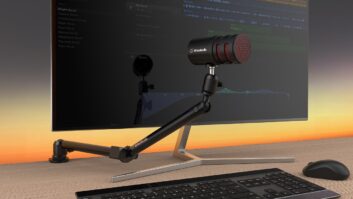
I’m writing this year’s article from my isolation tank hiding from the Covid-19 virus. As I sit here wondering when the lockdowns will end and what the new normal will be, I think about how change is ever constant. Sometimes it happens in a big way, and other times it happens over a longer span of time and is less noticeable. The normal before will not be the normal tomorrow—which brings me to the state of the consumer electronics retail industry. Interested in how a normal changes, I decided to look back at my first year of publishing the Top 100 Consumer Electronics Retailer list in 2004.
Purchase the 2020 Top 100 Consumer Electronic Retailer Report here.
The normal then was the sale of products such as VCR’s, CD players, DVD players, standalone fax devices, answering machines, dot matrix printers and other such products long obsolete by 2019. There were cellular phones, but the iPhone was still three years in the future. The ruling retailers of the 2004 Top 10 list included Circuit City, Radio Shack, CompUSA and Sears, and the rest of the list held others long forgotten.
Total sales for the Top 100 retailers in 2004 were $97 billion, while today’s Top 100 group of retailers generated $139 billion. Adjusting the 2004 sales figure for inflation results in a Top 100 sales figure of $131 billion in 2019 dollars. There has been $8 billion in real growth over the past sixteen years, which is about $500 million per year coming from fewer different consumer electronics products, and sold by far fewer retailers. In 2004, 71% of all consumer electronics retail dollars came from the Top 10 retailers. Today, concentration in the Top 10 is even greater at 88%.
We have a lot more people at the end of 2019 than we did in 2004, so does that cause the per person spend to look even worse? 2019’s population of 328 million spent, on average, $424 per person across the Top 100, and 2004’s population of 293 million spent $446 per person—adjusted to 2019 dollars. If we were to hold spend-per-person constant, this year’s Top 100 should have seen sales of $146 billion, not $139 billion. It’s a crude approximation, but it shows we are spending less per person on consumer electronics products.
That missing revenue has migrated from products to content purchases, with significantly more money being spent per person than $446 would suggest. Consumer focus is far less on devices, and much more on the content those devices deliver. It’s difficult to derive a change in spend on things that used to be part of our normal— such as CDs, DVDs, newspapers, trips to movie theaters and the like—to spend on their digitally delivered progenies, but we estimate that the current spend on content is around $1,200 per person, on top of spend for devices.
Back to my friends on the Top 100 Consumer Electronics list. They have the unenviable position of watching what used to be their revenue stream rush through the devices they now sell for low prices and low margins. What is a retailer to do? Get in the business of selling content? Not likely. Maybe shift their mix to focus more on appliances, furniture, mattresses, installation, setup and repair? That’s the new normal.
Bob Tancula is a principal of Senex, a Louisville, Ky.-based industry research and analysis firm founded in 2016 to provide greater clarity into markets, and opportunities for entities involved in product development, mergers and acquisitions, retailing, and product design. Tancula has helped compile the TWICE retail rankings since 2006.
See also: How To Help Your Employees Feel Successful While Remote Working













